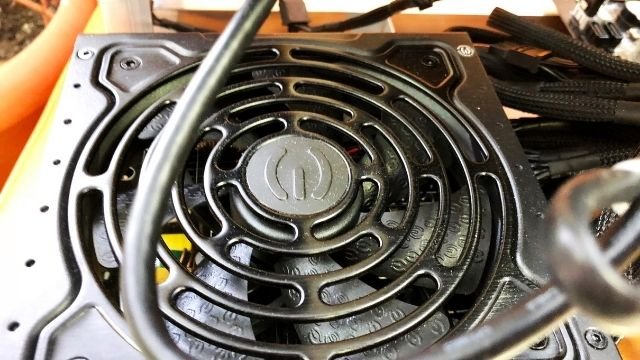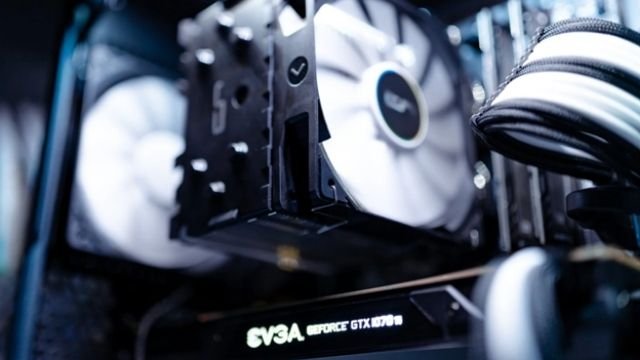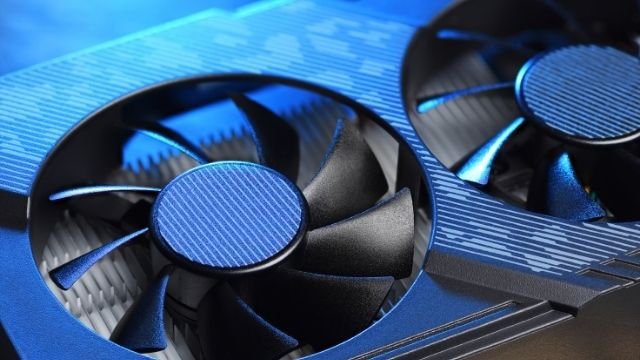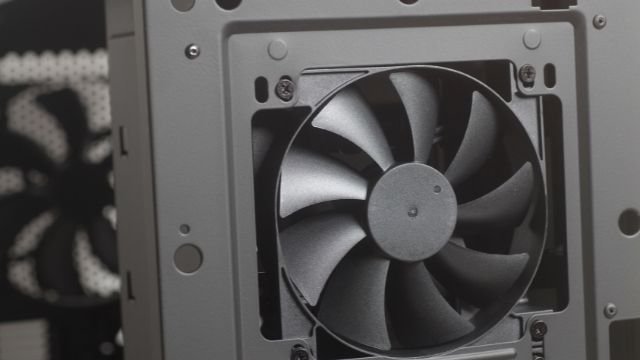Types of PC Fans and Their Purposes [2023 Beginner Guide]
A PC with good thermal management will be able to perform hefty tasks without breaking a sweat for extended periods. A PC with bad thermal management, however, will throttle* whenever it heats.
*throttling is commonly used to automatically slow down the computer when possible to use less energy and conserve battery
Not only that but it will also most likely crash different programs and even the OS. That’s where PC fans come into play.
All the fans in a computer dissipate heat, one way or another. But some people don’t know how many fans are even there on a computer, and what’s the purpose of each of those. Well, that’s what this post is all about. Read on to find out everything about PC fans that you need to know.
Why do we need PC fans?
As mentioned earlier, dealing with the excess amount of heat produced in a computer is essential. If there’s no way to dissipate the generated heat, it’s going to cause a series of problems.
For that reason, you need fans on your PC.
Each fan performs a simple task: dissipating the internally-generated heat into the outer atmosphere. For example, when you do heavy processing, like editing or gaming, on your PC, the CPU is put under pressure and gets hotter.
The heat is then transferred from the CPU to the heatsink through direct contact, accompanied by a thermal paste. After the heat is been relocated to the heat sink, it’s taken out of the computer using a fan.
That’s why the air that comes out of your PC or laptop is hot; it’s the heat that’s generated by your CPU during different operations.
Types of computer fans and when do we need them
Even though all the fans are designed to dissipate heat one way or the other, they differ in how they do this job. The functionality, of course, depends on the type of fan you’re talking about.
Here are all the types of PC fans you should be aware of.
1. Power Supply Unit (PSU) fan
Your PC’s power supply converts the incoming AC power to regulated DC power, which is then used by different components of your computer to run. However, this conversion process is never fully efficient, and power is lost in the process as excess heat. This heat is produced within the casing of the PSU, and if you don’t remove it, it can cause problems.
That’s where PSU’s fan comes into play. The PSU fan doesn’t really blow the air out of the casing, but instead, it’s designed to draw cooler air into it. When that happens, the internal air pressure in the PSU rises, and warmer air is pushed out of the PSU casing from the back.
Unless you’re consuming really low amounts of power in your PC by only working with lightweight apps, you’d always need a PSU fan to keep the internals cool. If you don’t, the power supply unit might overheat and eventually degrade, or even cause catastrophic problems.
2. Central Processing Unit (CPU) fan
Your computer’s CPU is the primary microchip in it. It does most of the processing work. Plus, the harder you push it, the warmer it gets. It’s crucial to keep the CPU cool to keep the computer performing well.
A CPU fan’s one-and-only job is to keep the CPU cool. It works in collaboration with the heatsink to collect heat from the CPU, and then eventually blow it off the CPU. A CPU fan is, unarguably, one of the most important fans of a computer. You need it in every single case, otherwise, the CPU is very likely to overheat quickly, and even meltdown under heavy loads.
3. Graphics Processing Unit (GPU) fan
While doing graphically-intensive tasks, like playing games, editing videos, or rendering illustrations, your computer’s graphics card, also known as the GPU, produces heat. GPU fans are used to prevent these cards from overheating.
GPU fans come in two designs, open-air and blower.
The functionality of both types is the same. They take in cooler air from outside the casing of the GPU, use it to cool down the internals of the GPU, and then expel it outside the casing. However, both types differ a bit in terms of design. Open-air fans take in cooler air from one or more fans, and warmer air is expelled from the hollow compartments at the sides of the GPU.
A blower fan, however, has a specialized pathway for the outflow of warm air. Cool air is taken in using a fan, used to cool down the GPU, and expelled out using the pathway.
4. Case fan
After the CPU and GPU fans expel the hot air inside the PC case, it needs to be taken out — and that’s where case fans come into play. A case fan, as the name suggests, is attached to the computer case, and is responsible for taking the hot air outside the PC.
Case fans are crucial, mainly because if there’s no case fan, then the hot air will stay inside the PC case and cause overheating. All in all, the case fans complete the overall cooling cycle of a computer.
5. Laptop fan
Most laptops have cooling fans, usually located at the bottom of the laptop. In fact, only a few thin-and-light laptop models don’t have fans, the most popular of them is, of course, Apple’s M1 MacBook Air.
The purpose of these fans is simple: blowing away warmer internal air.
Today, third-party external fans, also known as cooling pads or laptop coolers, are also available in the market. These can provide a bit of extra thermal performance if your laptop struggles to stay cool while performing tough tasks.
Important metrics to PC fans
Here are the top metrics about PC fans you should know about.
1. RPM
RPM stands for revolutions per minute. This metric indicates how many times your PC fan revolves per minute.
Technically speaking, the higher the RPM, the better the thermal performance. When the fan spins faster, it can blow more warm air outside or cool air inside. However, you should follow a safe limit. The average safe limit for a PC fan’s RPM is 3500-4000 RPM.
Lower RPMs make sense when you aren’t doing anything intensive on the computer. An RPM higher than 5000, however, is never recommended. Firstly, a 5000+ RPM would make a lot of noise, loud enough to be inconvenient. Secondly, running at this RPM for extended periods may damage the fan.
2. CFM
CFM stands for cubic feet per minute, and it defines how much air a fan can blow in or out of the computer in a minute. The higher the CFM, the better — as the fan will be able to blow more air, leading to better cooling.
However, be noted that fans that blow a lot of air may also be noisy. You have to strike the right balance between RPM, CFM, and noise in decibels. 60 CFM is a sweet spot; less than 50 CFM is marked as quiet, while 100+ is certainly in the “noisy” category.
3. dBa
Last but not least, dBa is the measure of loudness in decibels. The higher the dBa value, the louder the noise coming out of the fan.
In most cases, a dBa rating of around 25 decibels is acceptable. Anything higher than this might be too loud and uncomfortable in a silent room.
PC fan sizes & does fan size matter?
A larger fan will be able to cool down a PC better, without needing that much RPM. That’s because a larger fan has a larger overall surface area, which allows for a higher intake of air.
Say a 140mm fan and a 120mm fan are running at the same RPM. The 140mm fan will be able to intake more air, and hence, offer better cooling, without needing to spin faster.
The most common PC fan size is 120mm. However, it’s easy to find various other sizes in different configurations, like 80mm, 140mm, and even 200mm.
The bottom line
PC fans play a crucial role in keeping your computer healthy and performing well. While selecting a fan for your new PC or upgrading an existing one, it’s important to have the right pieces of info by your side.
After reading this post, however, you’re ready to go out there and pick the best fan for your needs.








